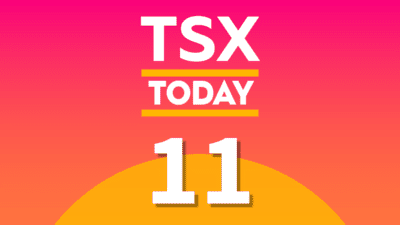There’s been no shortage of news surrounding Loblaw Companies Limited (TSX:L) lately, with everything from bread price scandals to rebates that are asking for more personal information than some would like, but does this make the grocer any less of an investment?
Let’s look at how the company is performing and determine if there is still upside.
Let’s clear the air on the bread and gift card scandals
Part of determining whether a company is a good investment or not is separating the personas of consumer and investor that many of us play, and the secret here is not to wear both hats at the same time.
Consumers were outraged earlier this year when Loblaw admitted to raising bread prices over a 14-year period. The important point here that is often neglected is that Loblaw is not the only grocer that conspired to raise prices. At least seven grocers including Loblaw were mentioned, although Loblaw and parent George Weston Ltd. were the only ones to admit it.
As a consumer, I’m outraged that this took place, but it won’t change my shopping habits. As an investor, however, I’ll give Loblaw marks on the responsibility side for fessing up and trying to make amends, despite the company tripping over itself with the ensuing “gift card scandal.”
Loblaw issued $25 gift cards to customers that purchased bread at the inflated prices as a make-good. That gesture didn’t stop some consumers from stating their dissatisfaction at Loblaw asking claimants to provide personal information, such as a utility bill or driver’s licence.
Again, I’m outraged as a privacy-wary consumer, but as an investor, the action was admirable to reimburse customers. Even the privacy issue is justifiable; it’s to ensure the company is not issuing multiple cards per household.
What’s next for Loblaw?
Loblaw is trading down year to date by just over 5%, and when extended out to a full 12-month period, the company is down over 11%. This provides would-be investors with an intriguing buying opportunity for what is otherwise a great investment. The drop in price has also helped Loblaw’s dividend yield appreciate to 1.67%, but this is unlikely to be the sole reason to consider an investment.
There’s also the growing fear of e-commerce behemoths such as Amazon.com Inc. beginning to offer grocery-delivery services, which could, in theory, eat into Loblaw’s margins.
Loblaw announced fourth-quarter results last month that came in lower than expected. Profit attributed to common shareholders came in at just $19 million for the quarter, down from the $201 million reported in the same quarter last year.
That drop was primarily attributed to the gift card make-good effort, which cost the company $107 million. Loblaw also recorded a $189 million charge related to merging both loyalty programs from Loblaw and Shoppers under a new single PC Optimum brand.
If that were not enough, the cost of minimum wage hikes is likely to spill over well into 2018, with the company estimating a $190 million surge in labour costs. Healthcare reform relating to generic prescription drugs is likely to add an additional $250 million charge to Loblaw’s 2018 income.
Adjusted earnings attributed to shareholders came in at $441 million, or $1.13 per share, representing an increase over the $393 million, or $0.97 per share, reported in the same quarter last year.
Should you invest in Loblaw?
Loblaw is actively engaging in cost-cutting measures and closing stores that are not profitable. By way of example, late last year Loblaw announced that 22 stores were slated to close.
It’s also worth noting that both charges in the most recent quarter were one-time events that are unlikely to occur in future quarters.
This should provide some solace for investors, but at this point, Loblaw is likely a better option for those investors looking at long-term growth, who have a tolerance for risk, and who will benefit from the discounted price and higher-yield dividend while waiting for the stock price to recover.

 Don't let our Poutine Day offer get cold: 65% off Stock Advisor ends at midnight!
Don't let our Poutine Day offer get cold: 65% off Stock Advisor ends at midnight!







